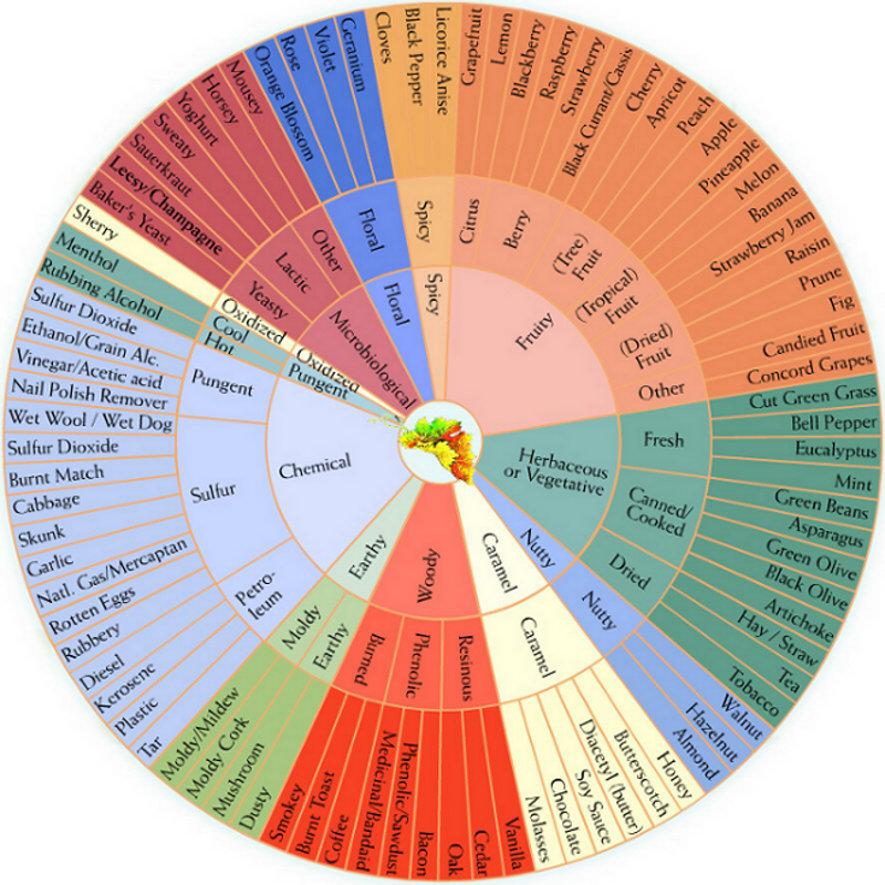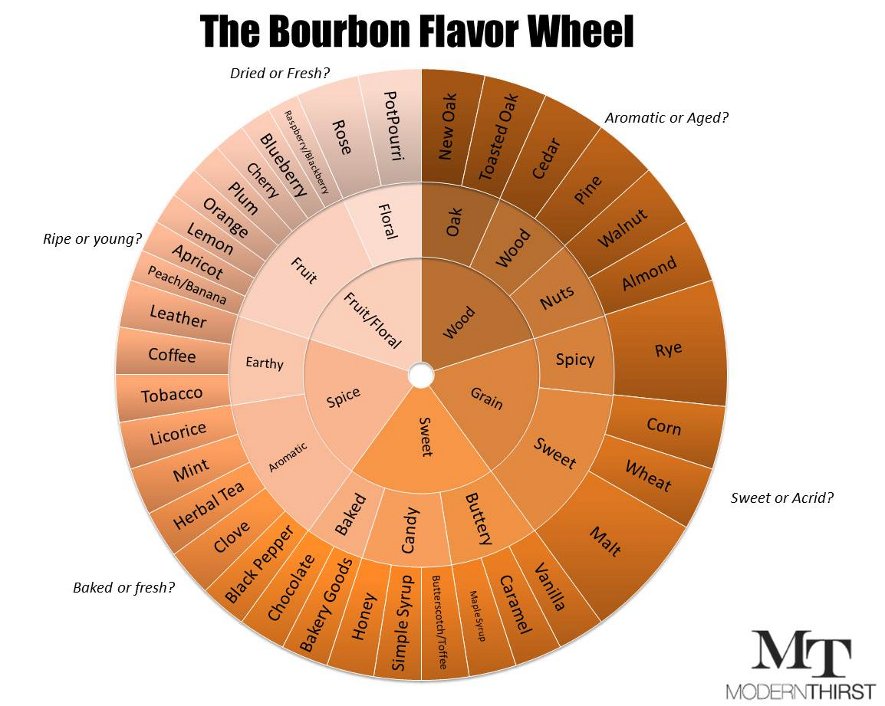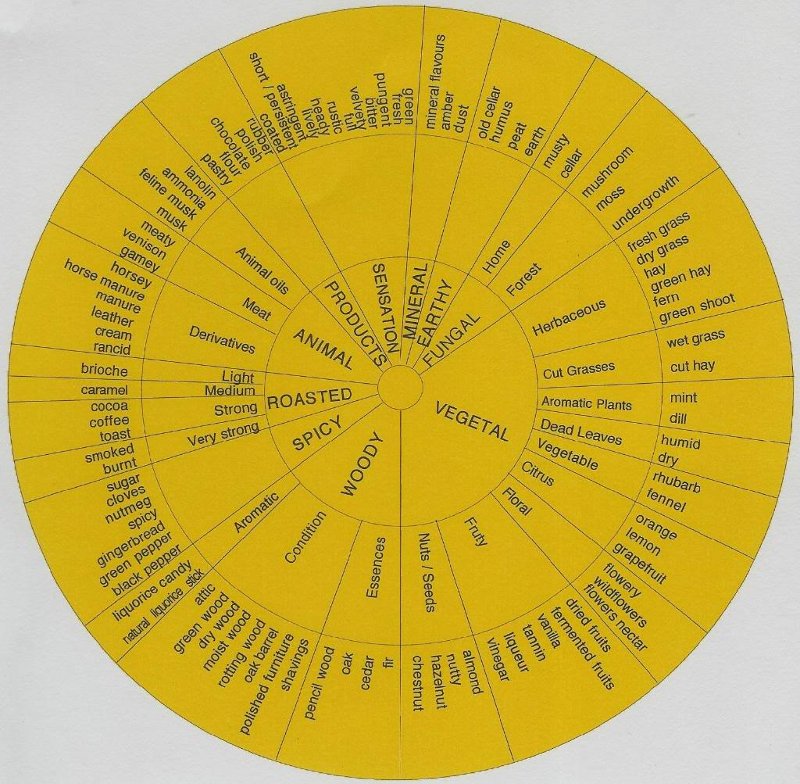Nice contribution, thanks...
A couple comments. Going back to when Sue Sea and I were first feeling absolutely naive and needing guidance,
in my usual obsessive manner I started gathering all manner of wheels - wine, whisky, chocolate, cigars, coffee -
you name it. Not only was I amazed by the sheer number of wheels for a huge number of very different products,
but I was equally surprised by the many commonalities among them.
This I believe is because these wheels are intended to do two things: first, to suggest different possible aromas or flavors, and second to categorize them in ascending heirarchies. Perhaps the one that set the standard (and still does)
is the Wine Aroma Wheel developed by Ann Noble of U.C. Davis University in California.
She did a ton of research not only to find flavors and aromas, but also to study which were identified most commonly,
and last to develop a system of organization designed to set forth a path for the novice to most easily learn, identify
and access them.
Ergo...

Her guide to using the wheel is at:
http://winearomawheel.com/how-to-use-it
and...
http://winearomawheel.com/Websites/arom ... e_2010.pdf
The idea is to work from the center out, from the general to the specific. For example once you think you perceive
something fruity, then you move out one level and decide yes, perhaps a berry, and then at the outer level finally
decide, yup, it's raspberry. In comparing wheels, please note that the bourbon wheel leaves out this intermediate
level. Trust me, Sue Sea and I really learned from Noble's wheel. We'd examine each inner category to see if
we found anything in that major category and if so, then move out. Some good advice: don't force yourself to
identify something - let things happen naturally, and voila - an aroma will identify itself. Very quickly you'll learn to expect and identify major categories, then middle categories and finally specific aromas and flavors. Honest.
The real breakthrough for us was realizing that breaking a spirit down into each specific element is not necessarily
enlightening. Often it's the combination, the sum of the parts that we are after and that is actually more meaningful.
For details on this breakthrough see here...
http://rumproject.com/rumforum//viewtop ... ght=foster
Noble acknowledges how most of us first feel quite at a loss insofar as aromas and flavors, but feels that except for
a very few, most of us can train our senses rather easily. Her guide and wheel are designed to do this. The wheel
is sold through the University and their is a link to purchase it - I urge all to do so. It is just $7.65 including shipping
and is very well made, and published in seven languages.
Although designed for wine, it will work for spirits just as well, particularly in that no rum wheel exists.
Why fer gawdssake?
The answer is simple. No one knows what rum tastes like, as most rum is altered; thus, except for the regular
readers/posters of The Project, there is really not much common agreement. The notion of styles, first indirectly
aluded to by Dave Broom, then officially organized and promoted here is only now beginning to be accepted - just
as rum is dying. Most are not even aware of the sugar addition, and as far as many other additives it's really just
about anything goes.
OTOH, relatively pure spirits like single malts or certain American whiskies do have more common elements, which
can be incorporated into a major wheel such as Noble's wheel. Stll and all said, there is no better starting place than
the UC Davis wheel for a good grounding in elements most commonly perceived.



